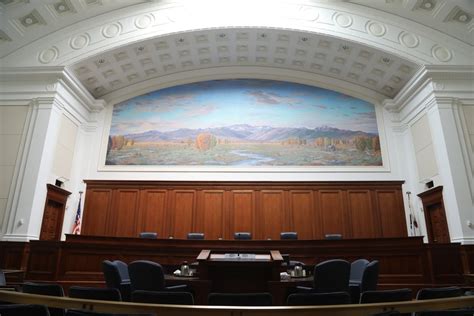The California Supreme Court is the highest court in the state of California, playing a pivotal role in shaping the state’s jurisprudence and ensuring that the laws of the land are interpreted in accordance with the principles of justice and equality. Established in 1849, shortly after California was admitted to the Union as the 31st state, the court has a rich history that reflects the evolution of the state and its legal system.
At its inception, the California Supreme Court was composed of three justices, but over the years, its composition has changed to accommodate the growing needs of the state. Today, the court consists of seven justices, each appointed by the Governor of California and confirmed by the California Commission on Judicial Appointments. The justices serve 12-year terms, subject to retention elections, which ensures a level of accountability to the public while maintaining judicial independence.
One of the key responsibilities of the California Supreme Court is to interpret the California Constitution and state statutes. This involves deciding cases that have significant implications for the rights of Californians, the operation of state government, and the application of the law in various contexts. The court’s decisions are binding on all lower courts in the state, making its role crucial in establishing precedent and guiding the development of California law.
The court’s jurisdiction is broad, covering a wide range of issues including constitutional law, statutory interpretation, contract law, tort law, family law, and criminal law, among others. Its decisions often have far-reaching consequences, influencing not only the legal landscape of California but also contributing to the development of legal principles nationally.
In recent years, the California Supreme Court has been at the forefront of several landmark cases that have garnered national attention. For example, in the area of same-sex marriage, the court’s decision in In re Marriage Cases (2008) paved the way for marriage equality in California, setting a significant precedent that would later influence the U.S. Supreme Court’s decision in Obergefell v. Hodges (2015).
Moreover, the court has been instrumental in addressing issues related to climate change, workers’ rights, and consumer protection. Its rulings have consistently underscored the importance of interpreting laws in a manner that protects the rights of marginalized communities and promotes social justice.
The process of bringing a case before the California Supreme Court is rigorous and selective. Typically, cases reach the Supreme Court after being decided in a lower court, such as a trial court or the Court of Appeal. Parties dissatisfied with the outcome in the lower court may petition the Supreme Court for review. The court then decides which cases to accept, usually focusing on those that present important questions of law or issues of significant public interest.
Once a case is accepted, the parties submit extensive briefs outlining their arguments, which are then reviewed by the justices and their clerks. The court may also hear oral arguments, where attorneys for each side present their case to the justices. This oral argument phase is critical, as it provides an opportunity for the justices to ask questions and for the attorneys to clarify their positions.
After thorough deliberation, the court issues a written opinion, which may be unanimous or reflect dissenting views among the justices. These opinions are meticulously crafted, often reflecting months of research and analysis. They not only resolve the specific dispute at hand but also contribute to the evolving body of California law.
In addition to its judicial functions, the California Supreme Court plays a significant role in the administration of justice in the state. It has oversight responsibilities over the lower courts and the legal profession, ensuring that the justice system operates effectively and ethically.
The court’s commitment to transparency and public access is evident in its decisions to livestream oral arguments and make its opinions and other court documents readily available online. This openness reflects the court’s understanding of its role as a public institution, accountable to the people of California.
In conclusion, the California Supreme Court stands as a cornerstone of the state’s judicial system, embodying the principles of fairness, impartiality, and justice. Through its decisions, the court has shaped the legal landscape of California, often setting precedents that resonate far beyond the state’s borders. As the state continues to evolve, the California Supreme Court remains vigilant, ensuring that the law serves the greater good and protects the rights of all Californians.
What is the composition of the California Supreme Court?
+The California Supreme Court consists of seven justices, each appointed by the Governor of California and confirmed by the California Commission on Judicial Appointments.
What are the key responsibilities of the California Supreme Court?
+The key responsibilities of the California Supreme Court include interpreting the California Constitution and state statutes, deciding cases with significant implications for the rights of Californians and the operation of state government, and establishing precedent for lower courts in the state.
How does a case reach the California Supreme Court?
+A case typically reaches the California Supreme Court after being decided in a lower court. Parties dissatisfied with the outcome may petition the Supreme Court for review, and the court decides which cases to accept based on their presentation of important questions of law or issues of significant public interest.
What is the significance of the California Supreme Court’s decisions?
+The decisions of the California Supreme Court are binding on all lower courts in the state and contribute to the development of California law. They often have far-reaching consequences, influencing not only the legal landscape of California but also contributing to the development of legal principles nationally.
How does the California Supreme Court ensure transparency and public access?
+The California Supreme Court ensures transparency and public access by livestreaming oral arguments and making its opinions and other court documents readily available online. This reflects the court’s commitment to operating as a public institution, accountable to the people of California.


